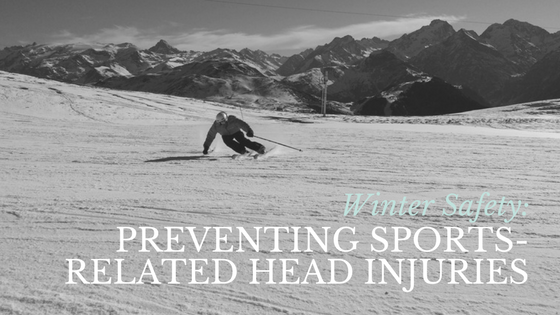There’s no such thing as cabin fever for the millions of people who participate in sports during the winter. From hockey to downhill skiing to sledding and snowboarding, the possibilities for recreational pursuits are many.
While perhaps not as common as other winter sports injuries, the number of concussions and other head-related injuries is certainly nothing to be ignored. Moreover, head injuries are the leading cause of disability and death among skiers and snowboarders.
Because they’re often performed at high speed and on slippery and hard surfaces, winter sports can lead to a variety of injuries. And that’s why preventing them is paramount.
By The Numbers
A study led by the John Hopkins School of Medicine said that approximately 10 million Americans ski or snowboard annually. Severe head trauma accounts for nearly 20 percent of all injuries related to those sports – including injuries that resulted in a concussion or loss of consciousness. While the number of skiers and snowboarders wearing helmets has increased over the year, few states have made helmets mandatory to participate in these sports.
The Danger of Concussions
According to the Centers for Disease Control, a concussion is considered a type of traumatic brain injury that’s the result of a blow or jolt to the head, or by a hit to the body that causes the brain to move rapidly back and forth. The sudden impact can damage brain cells and create chemical changes in the brain. Some common symptoms of a concussion include blurred vision, confusion, dizziness, vomiting, decreased coordination or balance, weakness, and swelling at the site of the injury.
If anyone you know notices these symptoms, you should seek medical attention immediately.
Preventing Head-related Injuries
Many winter sports-related injuries are preventable, and participants can play their favorite sport safely. Here are some tips for avoiding head-related injuries.
- Always Wear a Helmet
Wearing a properly-fitted helmet (one that fits securely on your head even when you’re wearing a hat or cap to stay warm) is perhaps the most important type of prevention. Be sure to replace your helmet after a serious fall or impact.
- Know Your Limitations
Take lessons and learn the fundamentals of your favorite sport before advancing to a more difficult level, especially on the slopes. Young children should never be allowed to play in snow and ice without adult supervision.
- Know Your Surroundings
Make sure you’re aware of any blind spots, sudden turns, or drop-offs before you hit the slopes. Ski or sled away from trees and avoid crowded areas when possible. Don’t wear headphones so that you can hear what’s going on around you.
- Wear Appropriate Clothing
Only wear clothing that’s appropriate for your favorite sport while never wearing clothes that interfere with your vision.
- Know The Signs of Concussions
There are a variety of symptoms associated with concussions, as mentioned previously, and these symptoms may occur right after the injury or for not even days and weeks.



